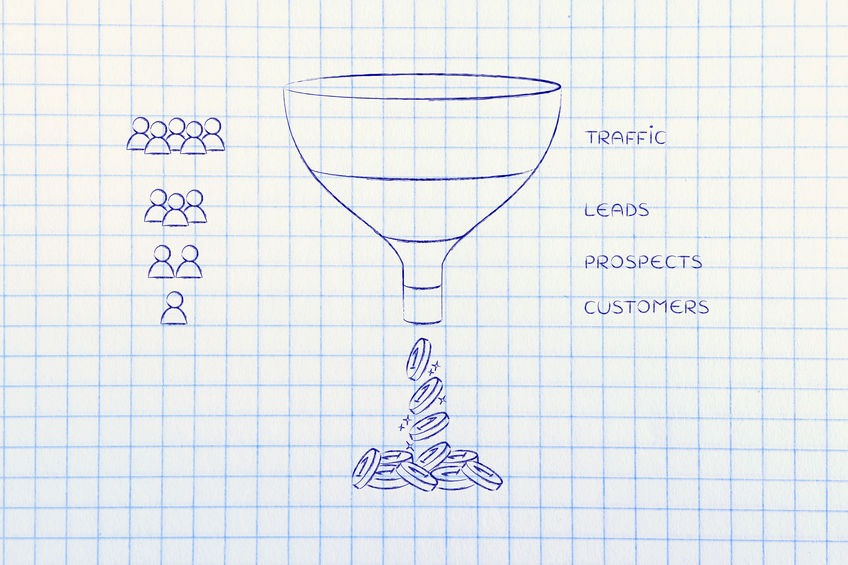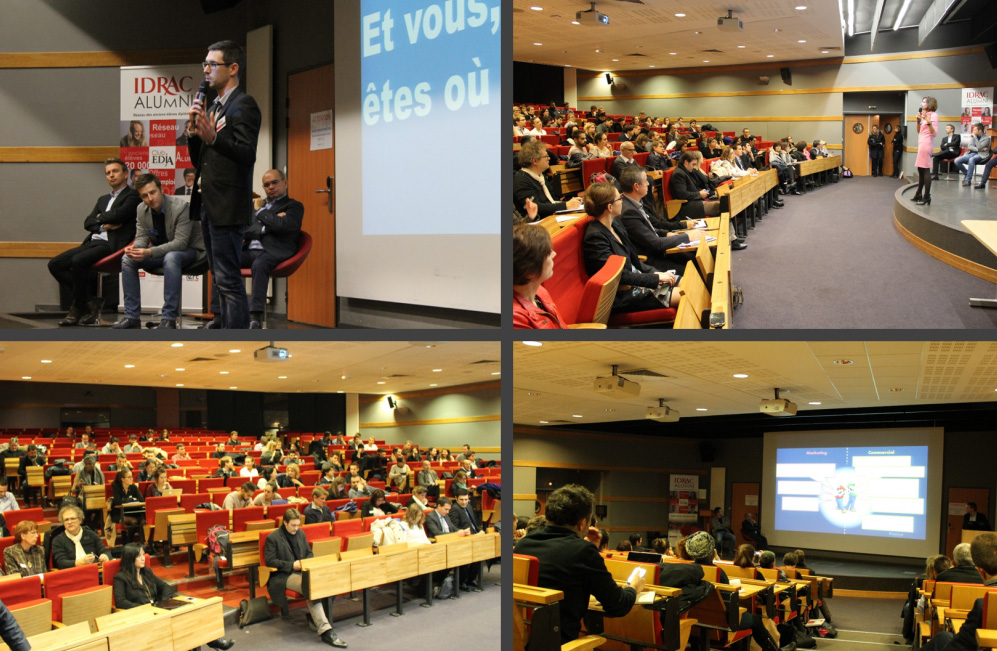Prior reminder: Inbound Marketing consists of attracting leads and nurturing their interest and reflection throughout their decision-making process, in order to convert them into qualified leads, prospects and then customers, or even, ideally, into convinced ambassadors of your brand and your offers!
It relies on the observed change in buyers' attitudes, who now carry out most of their purchasing process independently, relying in particular on the tools offered by digital technology (websites, forums, social networks, etc.) to develop their selection criteria and make their purchasing decision.
It naturally opposes Outbound Marketing, which relies on more 'push' strategies (particularly mass advertising and emailing) that have now lost their effectiveness.
The funnel logic of Inbound Marketing and the steps towards conversion can be summarized as follows:

The evening's program covered the 3 main stages of the Inbound approach:
1- Attract:
It involves attracting a relevant audience to your website – consisting of potential prospects – by offering them content that appeals to them and interests them, in line with your expertise. Several ingredients contribute to this:
-
- Storytelling (Nathalie Grynbaum, IDRAC): Producing content (distributable on the web) in an Inbound logic means above all knowing how to "tell a relevant story" that will attract and convince your audience. It is certainly a question of demonstrating your expertise, but above all of responding in a concrete and useful way to the concerns and questions of your prospects, by providing them with elements that will allow them at a minimum to fuel their thinking, and even sometimes to do part of the work themselves. You will then be identified as a reference expert partner, to whom they will naturally turn when they need it.
- S.E.O. – Search Engine Optimization (Eric Guillermain, IDRAC): Distributing rich and relevant content online to your targets also implies working on the visibility of your site: the production of this content is often a long-term job, so it has real value, in your eyes as well as for your targets... It would be a shame if they did not meet their audience! This implies generating traffic on your site, and preferably qualified traffic. One of the levers to achieve this is the S.E.O. (or "natural" referencing) optimization of your website and your digital content: this involves facilitating the identification of your pages and their content for search engines, by working on meta-tags, titles and descriptions, page URLs, image titles, lexical fields of texts, etc., according to their reading criteria. This optimization work is based on the study and analysis of the keywords used by your prospects during their online searches.
2- Engage
Being able to produce interesting content (for your target) that is representative of your expertise allows you to attract strangers and turn them into visitors to your website. Once this first objective is achieved, however, the most important thing remains to be done to really achieve your goal: ultimately, it is still always a question of selling your product or service offers! To do this, you need to work on the engagement of this audience.
-
- Engagement and social networks (Fabian Innocenti, PUBLIC ACTIF): This crucial step involves encouraging your visitors to deepen their relationship with you. To achieve this, you need to provoke interactions with your prospects that will lead them to invest (time, energy... and especially, emotion!) in a process that connects them to your brand. One of the most effective current vectors in this area is social media engagement: community engagement through the dissemination of viral images, gaming, direct online access to services and products, the ability to personalize or even co-design products... All of this plays a key role in engagement. It allows you to both expand your audience, get to know them better, and above all, truly "meet" their interests, expectations, and buying behaviors.
3- Transform.
If you already have a qualified audience engaged in a relationship with you, you have come a long way. However, your entire audience represents a mass of contacts too large to be handled effectively by your sales representatives. Moreover, not all visitors to your site or your social media pages are necessarily in the decision-making phase! It's up to you to bring them there, then, or to identify those who are already at a level of maturity that is "exploitable" for your sales force.
-
- Lead nurturing and lead scoring (Olivier Prost, KESTIO): The goal of this patient work and its culmination is to generate qualified and mature leads that can be passed on to the sales teams! This involves a "nurturing" process that consists of "feeding" your visitors' thinking and leading them to mature their purchasing project (for example, by offering them white papers, providing them with benchmarks, or inviting them to benefit from a free trial, etc.). The design and provision of this rich content is the subject of work closely involving the Marketing and Sales Department, in order to align and coordinate the objectives and the tempo of the operations. The interactions offered to prospects and their reactions make it possible to establish a "scoring" system aimed at identifying "mature" and interesting prospects. The score is established according to criteria such as the characteristics of the prospect (scale, sector, etc.) and their level of progress in the pre-purchase process (general information gathering, definition of selection criteria, etc.). At the end of the process, only leads that have reached the necessary score are passed on to the sales representatives, in order to effectively feed their pipeline and maximize their chances of success (optimization of conversion rates and the allocation of sales effort).
This conference demonstrated the effectiveness of this new marketing approach and the necessity of mastering all its facets for effective implementation. It resonated well with participants, including entrepreneurs, managers, marketing and sales professionals, and students.
And where are you in the process? How are you approaching the implementation of Inbound Marketing in your company?
To stay competitive and maximize your chances of converting leads into future customers, it is important to optimize the performance of your commercial assets. Find out how by watching this webinar:
Generating and leveraging qualified inbound leads is our expertise. For 10 years, KESTIO has been supporting companies (from SMEs to large corporations) in acquiring and retaining their customers.





